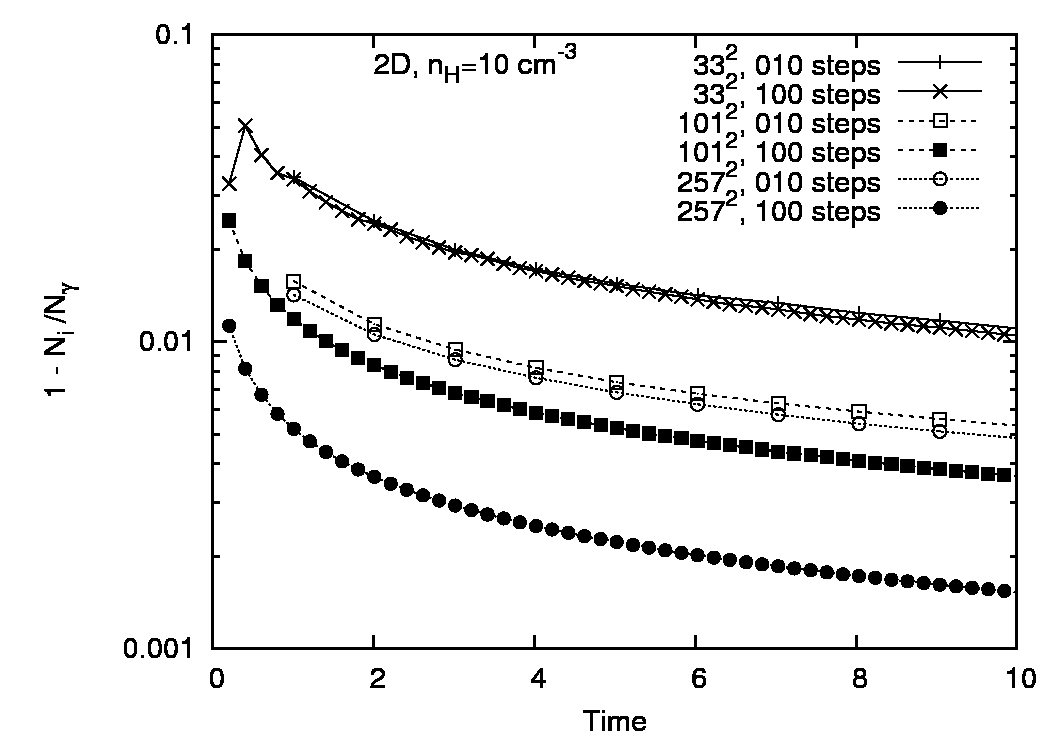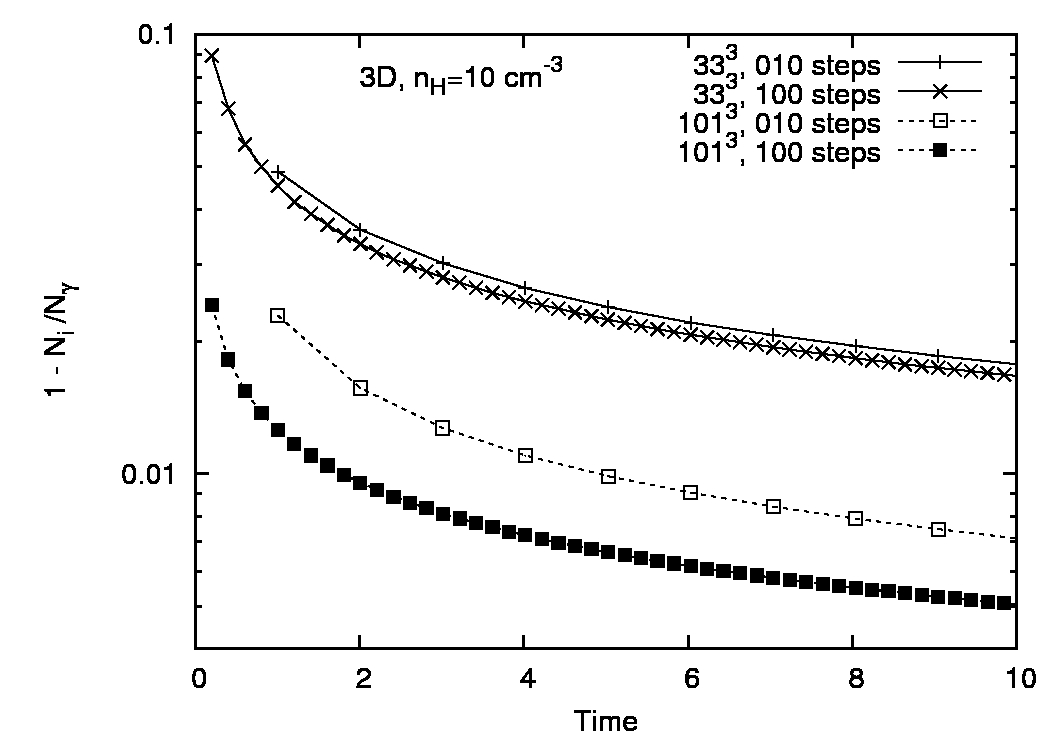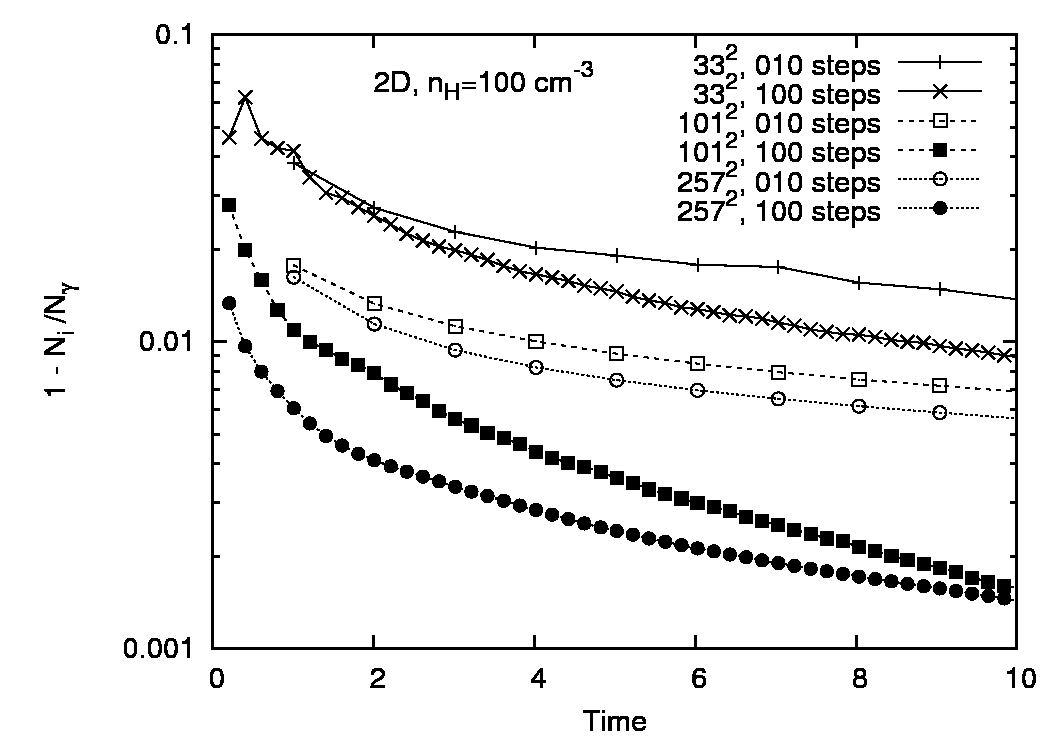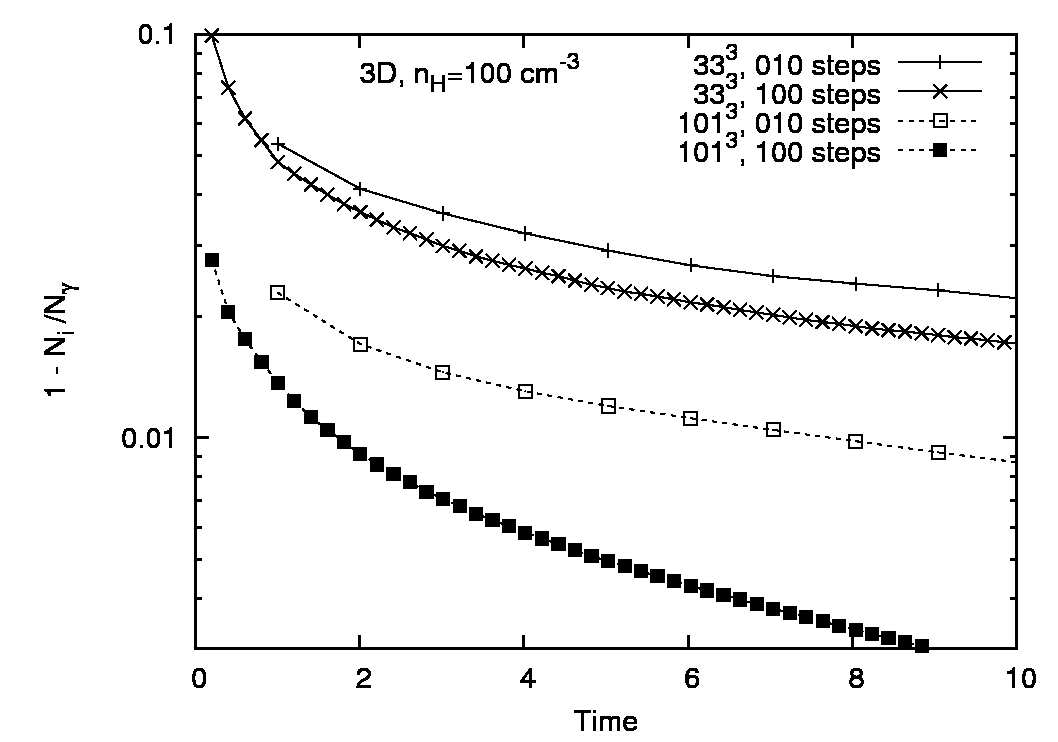We plot the photon conservation in Fig. 2.13,
for 2D on the left and 3D on the right. These figures show the
relative sizes of ray-tracing and time-integration errors as a
function of resolution and dimensionality. For the very low
resolution runs ( and
and  cells) we lose between 1 and 10 per
cent of photons due to interpolation errors in the ray-tracing when
the ionised region is
cells) we lose between 1 and 10 per
cent of photons due to interpolation errors in the ray-tracing when
the ionised region is  cells across. With increased spatial
resolution the errors decrease strongly whereas increased time
resolution doesn't help the 33 cell runs significantly. There is a
dramatic improvement in accuracy with time resolution for the 101 and
257 cell runs. These results show that the errors are interpolation
dominated when the number of cells is much smaller than the number of
timesteps and time-integration dominated in the opposite limit.
cells across. With increased spatial
resolution the errors decrease strongly whereas increased time
resolution doesn't help the 33 cell runs significantly. There is a
dramatic improvement in accuracy with time resolution for the 101 and
257 cell runs. These results show that the errors are interpolation
dominated when the number of cells is much smaller than the number of
timesteps and time-integration dominated in the opposite limit.
Using the weighting scheme recommended by Mellema (2006) we
find that I-fronts are circular to within a cell width over a wide
range of densities, luminosities, and spatial and temporal
resolutions.
Jonathan Mackey
2010-01-07



